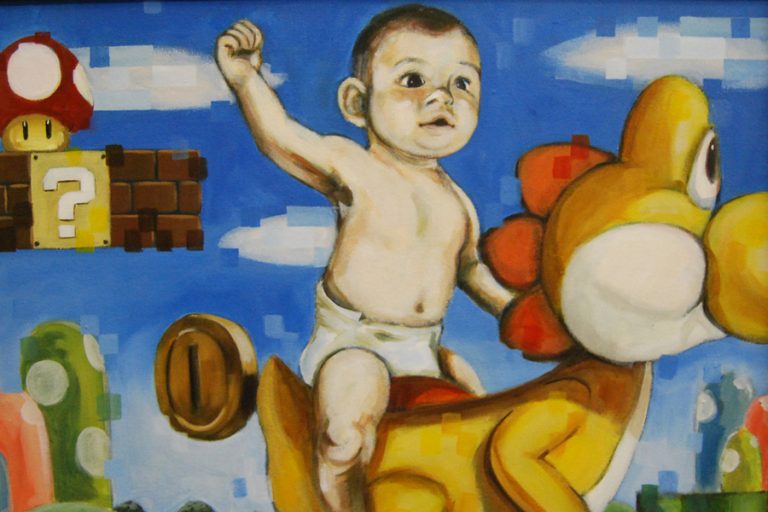Why do people value a painting or drawing? An elementary-school student I know recently answered: “Because when we look at art we can see how the artist felt about things.”
I continued the questioning. “When you make artwork in an art class at school, how is that different from or similar to doing an experiment in a science class?”
She answered: “It’s alike and different because in art I can express my feelings in my own way and in a science project I have to come up with a good idea for an experiment to fit the assignment.”
It was clear to me that her answers to both questions related to the value of creativity in both disciplines.
How is it that the sciences and the arts have lost their interconnectivity in our contemporary educational cultures?
I remember the value my parents and society placed on a liberal arts education when I was in high school in the ‘60s and college in the ‘70s.
I loved Herman Melville’s Omoo, which seeded my interest in Paul Gauguin’s vividly exotic Tahitian paintings, which sparked an interest in geography, which led to studies of travel and eventually to anthropology, which led to a fascination with the geologic ages of the earth, and then to an interest in astronomy, which led me to the lectures of Carl Sagan, which led to an interest in physics and abstract math, which took me to philosophy, which brought me back to fine art through an existential painting I came across by Paul Klee, whose work convinced me that art is what is essential and important and true and worth investing my life pursuing.
I have never regretted my decision. I have been a visual artist for 35 years. I experienced a successful career in Houston as a professional studio artist for 20 years and I was the creative director of a monthly metropolitan magazine for six years directing all visual aspects of the publication with a large budget for hiring illustrators, photographers and designers of distinction. These opportunities did not result from a specialized education in art, but from a background of diverse interests and the encouragement I received for embracing many interdisciplinary learning experiences.
Twelve years ago I came to UCF to share with students my knowledge gained as a professional studio artist and art director. Although UCF has proven to be an excellent place to teach and a reasonable environment in which to experiment with my own research in art, the largest barrier to the education of our students has not been the School of Visual Arts & Design’s ongoing budget constraints, but the lack of awareness or interest in our discipline from outside the College of Arts and Humanities.
The insulated art world is probably equally responsible for this dilemma in our contemporary society and here at UCF.
Two years ago a colleague approached me with the idea of UCF science instructors and students working with me and my advanced painting students in a science-related art assignment. Some of my other colleagues thought I was crazy to accept the challenge because they said “art and science have become diametrically opposed to one another.”
Although the project’s initial goal was to encourage painting students to understand and illustrate science concepts to help educate the art students about STEM (science, technology, engineering and mathematics) disciplines, all of us involved in the project quickly realized that the potential for creative thinking and learning was far greater for both science and art participants.
Rather than merely illustrating the concepts and theories presented by the various science instructors and students, the painting students created visual reactions. The resulting artworks were developed from the hearts and minds of each individual artist. The most successful works stimulated thought and conversation.
I want to emphasize that not only did the art students use their academic training in developing structural form and creative problem-solving, more importantly they experienced a less-understood process of inquiry and discovery that is familiar to mature artists. While the scientific method investigates phenomena in the effort to find empirical truth, it could be argued that an artist investigates phenomena in the effort to experience the myriad possibilities between truth and untruth.
In art, the answer to the inquiry or hypothesis is never intended to confirm reality, only to lead to more inquiry — so that art is always a series of questions to be contemplated, not solved.
During their creative process, these students formulated questions based on their intuition and knowledge, which was followed by testing and retesting until a suitable, personally relevant, solution – their finished artwork — was found. This is followed by public scrutiny in the form of a group critique from instructors and peers, which is intended to lead to essential skills of self-criticality that, when successful, results in a unique, creative solution.
The STEAM Initiative (“A” for Art is added to STEM teaching), will be embarking on its fifth semester at UCF this fall, with a second exhibition of student artworks next spring in the Visual Arts Building.
The STEAM idea is taking off at many universities and colleges across the country, reinvigorating the interconnectivity of the fine arts with the other academic disciplines.
UCF Forum columnist Carla Poindexter is an associate professor of fine art at the University of Central Florida and can be reached at Carla.Poindexter@ucf.edu.
